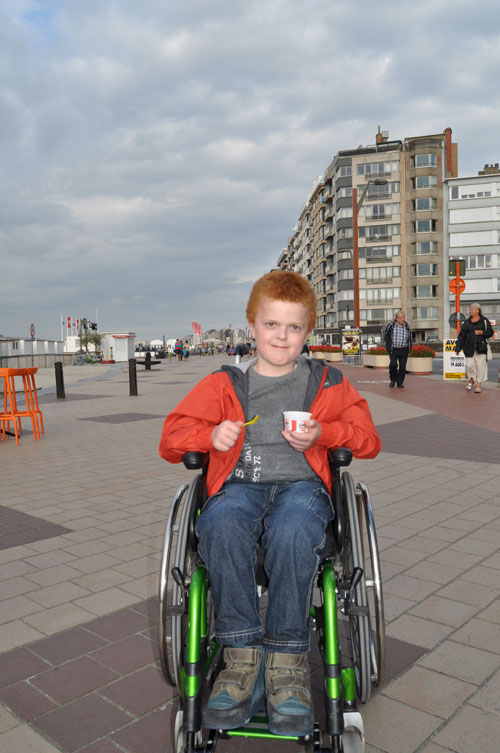Giant Axonal Neuropathy
October 2013
Last week, I heard the news that a GAN patient died. Giant axonal neuropathy (GAN) took the life of a 22-year-old woman. The fear of every parent of a child with GAN is that the day is coming when our child will have to leave us, taken away by this terrible disease, which finally wins despite years of us struggling, fighting a battle we could never win.
GAN is a fatal disease. It takes its toll on a child in awful ways. It affects the body in ways that are frequently difficult for people who aren’t medical professionals to understand. It’s a nightmare that can’t easily be identified or defined.
The facts of the situation are these: The disease affects a very small number of children. Right now, there are probably fewer than 50 confirmed cases of GAN in the whole world. Should the fact that such a small group of kids is affected sentence them to a life of suffering? There is no cure for this disease. At this time, there isn’t any viable treatment available for the young people who are battling GAN. They simply lose all control of their bodies, and death typically comes early in their lifetime.
My son, Gillian, is nearly 12 years old. If I compare his (dis)abilities year after year, I know that, when he was little, he still could walk. He could never run, but that was not an issue at the time. His grandmother used to comfort him with the words “Maybe one day, when you will be older, you will be able to run.” Did she know about the progression of the disease? Yes, she did, but she didn’t want to hurt him.
The “attacker”, as I sometimes call GAN, moves slowly at first: a few stumbles, a couple of falls maybe. You watch your child begin to lose his abilities: the ability to walk, to ride a bike, etc. The joy of playtime is the very essence of childhood, and the disease is sapping that joy in a slow but steady onslaught. The spirit of a child allows him to be resilient, to bounce back, but the disease is persistent.
The things that every parent most wants to share with their child include happiness, love, joy, and the feeling that everything will be okay. For parents of a child with GAN, this last wish is something you probably will never be able to live up to. Imagine looking for help for your suffering child and finding little or none. Imagine the struggle, the fight, and the frustration that there is nothing you can do to help. All this is very hard to bear. Day after day, you see that the disease is taking more control. I hate GAN! I hate what it is doing to my child!
As I write this, Gillian has been participating in a natural history study for GAN in the USA. He is also hoping to participate in a new gene therapy delivery clinical trial starting in January 2014. There would only be seven or eight patients in this trial. This summer will mark our third trip to the USA to participate in these studies. My son is very brave, participating in these studies! We are able to go because of fund-raising campaigns that we launched over the past three years. We thank everyone who has helped us!
With the aid of University of Ghent Professor Rudy Van Coster, we have produced a flyer to help parents and clinicians identify GAN. We also have our own local website in Dutch language that we hope to translate into English soon and we collaborate with the Hannah’s Hope Foundation in the USA. We are very interested in identifying other GAN patients around the world and urge you to contact us or Hannah’s Hope if you are out there. The fact that there are so few patients and that they are spread all over the world makes it very hard to organise an event with other families. But yes, it is still one of my dreams, and who knows, maybe one day it will happen.
Annemie Pasmans, mother of Gillian – http://www.hoopvoorgillian.be/ – http://www.hannahshopefund.org/
